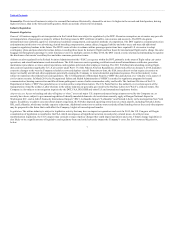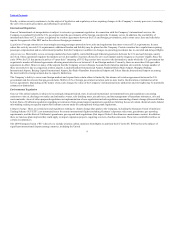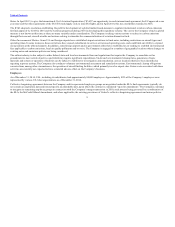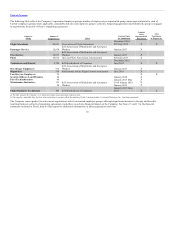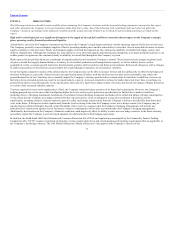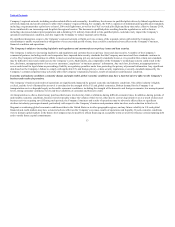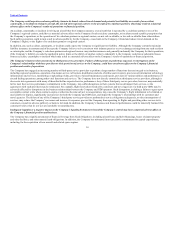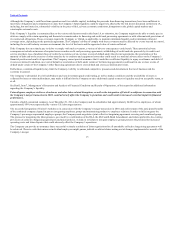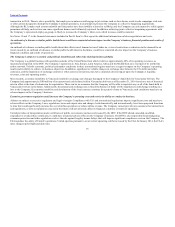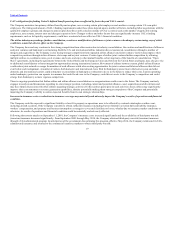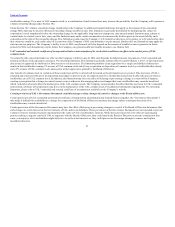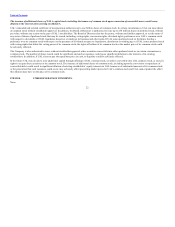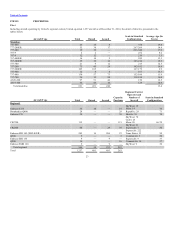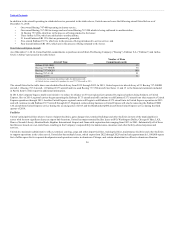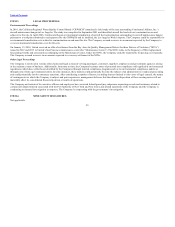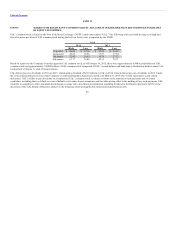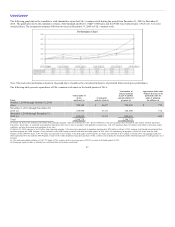United Airlines 2014 Annual Report Download - page 17
Download and view the complete annual report
Please find page 17 of the 2014 United Airlines annual report below. You can navigate through the pages in the report by either clicking on the pages listed below, or by using the keyword search tool below to find specific information within the annual report.
Table of Contents
requirements under Part 117 of the Federal Aviation Regulations took effect, which has increased costs for all carriers. In July 2014, minimum qualifications
took effect for air carrier first officers. These regulations impact the Company and its regional partner flying, as they have caused mainline airlines to hire
regional pilots, while simultaneously significantly reducing the pool of new pilots from which regional carriers themselves can hire. Although this is an
industry issue, it directly affects the Company and requires it to reduce regional partner flying, as several regional partners have experienced difficulty flying
their schedules due to reduced pilot availability. From time to time, the FAA also issues orders, airworthiness directives and other regulations relating to the
maintenance and operation of aircraft that require material expenditures or operational restrictions by the Company. These FAA orders and directives could
include the temporary grounding of an entire aircraft type if the FAA identifies design, manufacturing, maintenance or other issues requiring immediate
corrective action. FAA requirements cover, among other things, retirement of older aircraft, security measures, collision avoidance systems, airborne
windshear avoidance systems, noise abatement and other environmental concerns, aircraft operation and safety and increased inspections and maintenance
procedures to be conducted on older aircraft. These FAA directives or requirements could have a material adverse effect on the Company. Also, OSHA’s
regulatory programs for hazard communication, hearing conservation and blood-borne pathogens in the areas of cabin crewmember safety and health, which
began in March 2014, have exposed the Company to increased regulatory requirements in the aircraft cabin, with associated increased costs and the
possibility for operational impacts.
In addition, the Company’s operations may be adversely impacted due to the existing antiquated air traffic control (“ATC”) system utilized by the U.S.
government. During peak travel periods in certain markets, the current ATC system’s inability to handle existing travel demand has led to short-term capacity
constraints imposed by government agencies and resulted in delays and disruptions of air traffic. In addition, the current system will not be able to effectively
handle projected future air traffic growth. Imposition of these ATC constraints on a long-term basis may have a material adverse effect on the Company’s
results of operations. Failure to update the ATC system in a timely manner, and the substantial funding requirements of a modernized ATC system that may
be imposed on air carriers may have an adverse impact on the Company’s financial condition or results of operations.
The airline industry is subject to extensive federal, state and local taxes and fees that increase the cost of the Company’s operations. In addition to taxes and
fees that the Company is currently subject to, proposed taxes and fees are currently pending and if imposed, would increase the Company’s operating
expenses.
Access to landing and take-off rights, or “slots,” at several major U.S. airports and many foreign airports served by the Company are, or recently have been,
subject to government regulation. Certain of the Company’s major hubs are among increasingly congested airports in the United States and have been or
could be the subject of regulatory action that might limit the number of flights and/or increase costs of operations at certain times or throughout the day. The
FAA may limit the Company’s airport access by limiting the number of departure and arrival slots at high density traffic airports, which could affect the
Company’s ownership and transfer rights, and local airport authorities may have the ability to control access to certain facilities or the cost of access to its
facilities, which could have an adverse effect on the Company’s business. The FAA historically has taken actions with respect to airlines’ slot holdings that
airlines have challenged; if the FAA were to take actions that adversely affect the Company’s slot holdings, the Company could incur substantial costs to
preserve its slots. Further, the Company’s operating costs at airports at which it operates, including the Company’s major hubs, may increase significantly
because of capital improvements at such airports that the Company may be required to fund, directly or indirectly. In some circumstances, such costs could be
imposed by the relevant airport authority without the Company’s approval and may have a material adverse effect on the Company’s financial condition.
The ability of carriers to operate flights on international routes between airports in the United States and other countries may be subject to change.
Applicable arrangements between the United States and foreign governments may be amended from time to time, government policies with respect to airport
operations may be revised, and the availability of appropriate slots or facilities may change. The Company currently operates a number of flights on
international routes under government arrangements, regulations or policies that designate the number of
17


